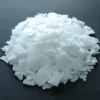Thermoplastic elastomers (TPEs)
Thermoplastic elastomers (TPEs) constitute a commercially relevant and fundamentally interesting class of polymeric materials. In general, they are two-phase materials that (i) have the combined properties of glassy or semi-crystalline thermoplastics and soft elastomers and (ii) enable rubber materials to be processed as thermoplastics. They may be single macromolecules in which discrete thermoplastic segments capable of forming rigid nanoscale domains or channels are covalently bonded to rubber segments that provide a soft matrix that the domains Solids are located in it. Due to covalent bonding between chemically dissimilar moieties, rigid domains can form a three-dimensional network of physical cross-linking sites. As a result, TPE exhibits mechanical properties that are comparable to those of a vulcanized material in many ways. Rubber with a covalent network, with the difference that the network and thus the properties of TPE are thermally reversible. This property makes TPEs suitable for high-throughput thermoplastic processes, such as melt extrusion and injection molding. The two main intrinsic types of TPEs are microphase separated block copolymers (including grafting) and segmented polyurethanes, although additional segmented copolymers are increasingly available. In some cases, TPEs can also be produced from existing homopolymers via reactive synthesis. In this work, we identify and discuss Some recent developments in TPEs and their applications.[1]
Thermoplastic elastomers (TPEs) have gained popularity in the last few decades due to their versatile specialized properties and wide range of applications. TPE is a multi-phase system with combined characteristics of elastomers and thermoplastics. These constitute the service characteristics of vulcanized and reinforced rubber and the processing properties of thermoplastic polymers. TPEs can be classified into different types based on their composition, namely (1) styrene block copolymers (SBC), (2) thermoplastic polyurethane (TPU), (3) thermoplastic elastomer based on poly(ether ester), ( 4) Polyamide. thermoplastic elastomer based, (5) polyolefin and rubber blends (6) dynamic vulcanizable polymer blends (TPV), etc. The phases are mostly non-crystalline, and monomer incompatibility enables them to assemble into phase-separated microdomains. They generally show spherical, cylindrical/gyroid and lamellar morphologies. Depending on the composition and molecular weight, the morphology can be easily changed. In block copolymer-based TPEs, each phase is chemically bonded to the other phase by covalent bonding. The hard phase consists of glassy and isolated thermoplastics that provide mechanical strength and integrity and make the product thermally processable. On the other hand, the elastomeric phase provides the elasticity, flexibility and toughness of the material. transition temperature (Tg) and crystal melting temperature (Tm). The service temperature is between the Tg of the elastomeric phase and the Tg or Tm of the hard phase. Due to their special properties, TPEs are gradually replacing conventional rubbers in elastomer markets. Meanwhile, SBCs have reached a turning point in this regard. These are linear ternary copolymers (ABA type) with different physical properties, service temperature, flexibility and applications. Some examples of these are: styrene/butadiene/styrene (SBS), styrene/isoprene/styrene (SIS), styrene/ethylene-butylene/styrene block copolymers (SEBS), styrene/isobutylene/styrene (SIBS), styrene/ Ethylene-propylene. /Styrene (SEPS) etc. [2]
TPEs are used in many industries.
automobile industry
Medical industry
Sanitary ware industry
Household appliance industry
And …
Spontak, R.J., Thermoplastic elastomers: fundamentals and applications. Elsevier, 2000.
Maji, P., Styrenic block copolymer-based thermoplastic elastomers in smart applications: Advances in synthesis, microstructure, and structure–property relationships—A review. Applied polymer, 2022.



